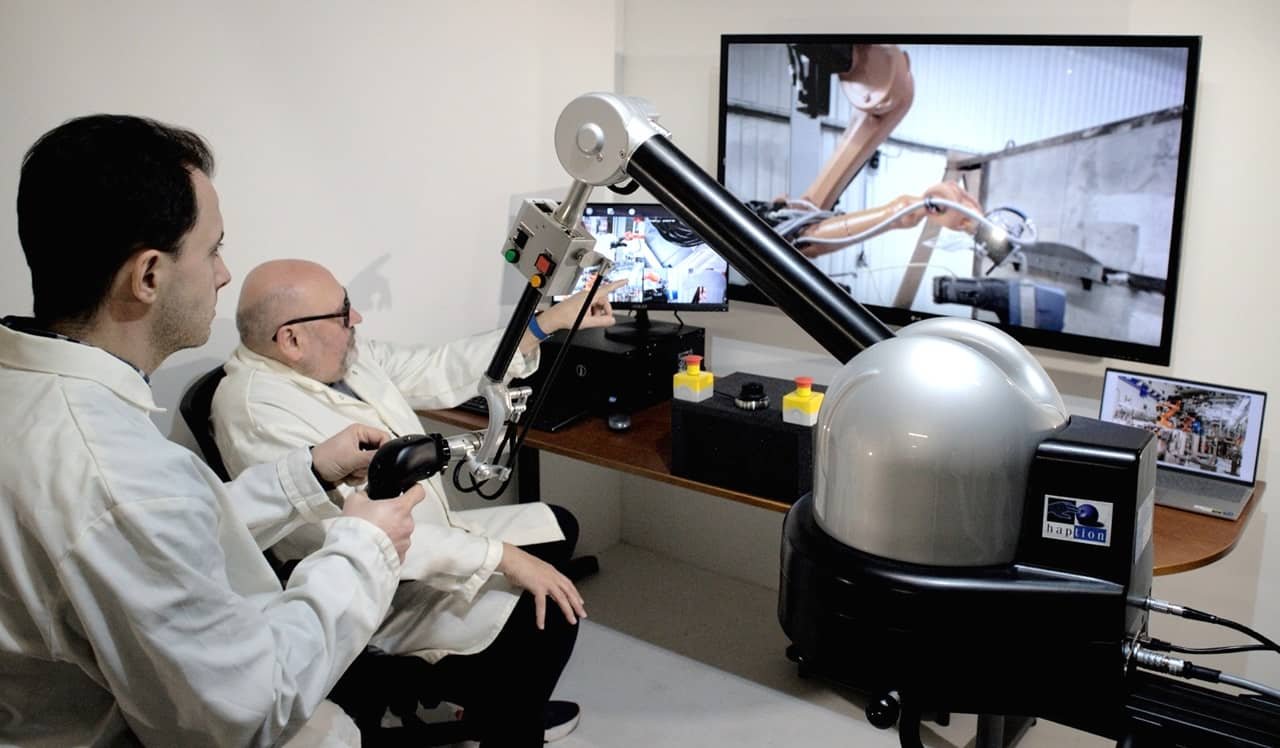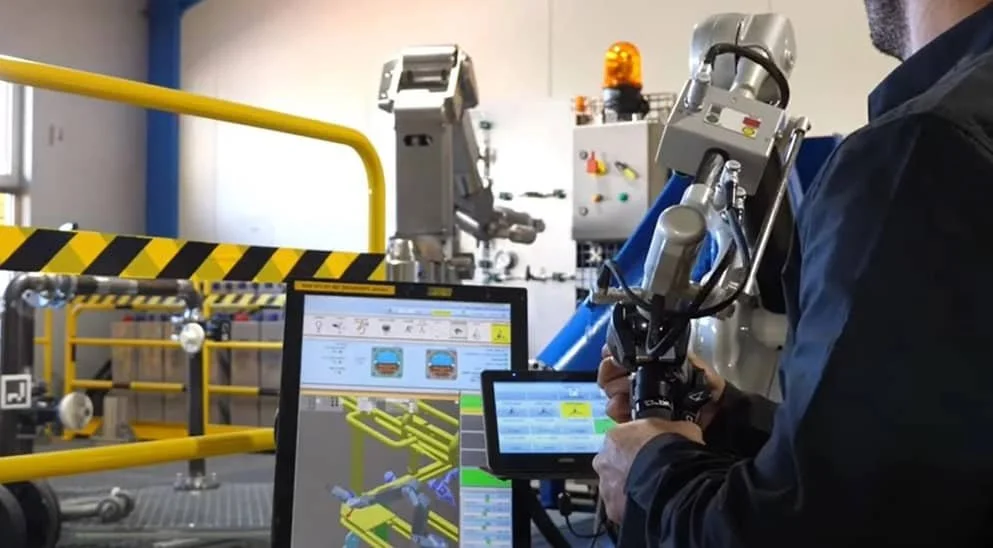Industrial applications
Haption products are used by engineers to solve industries challenges in various fields such as nuclear, and in laboratory work.
And now with the boom of robotics in all industries, Haption products are now used to improve operators working conditions and employability.
Nuclear
“It is a combination of teleoperation and telepresence.”
EXPERIENCES SINCE 2001
TeleRobotics for the maintenance operations inside the hot cells
Decommissioning : inspection, dismantling, waste sorting & waste minimization
Remote manipulation inside glove boxes
Simulations for faster R&D cycles, better changes management and efficient operators trainings
Control of dedicated OEM ruggedized robots
Nuclear Hot Cells
“With already more than 30 VIRTUOSE 6D HF TAO used on a site, customer annual maintenance cost has been reduced by 75%, resulting in significant cost savings compared to previous mechanical manipulators.”
Robotics and remote systems are essential technologies for work in the radiation environments typically encountered in the nuclear back-end, such as in radioactive hot cells, waste management and decommissioning. In addition to enhancing radiation safety, there are many reasons to use robotic system controlled using HAPTION force feedback device, such as improving process safety and efficiency.
Nuclear glove boxes
“No hands-in the glovebox is possible now.
No workers around a glove box is also a key topics.
Furthermore, wider accessibility inside the gloveboxes volume already brings a major improvement.
Working on more automation makes sense, Haption solutions enables to have a solid plan in case of unexpected situations!”
Having people reach into gloveboxes through ports is a potential safety hazard and has led to incidents in the past. By using HAPTION force feedback device with robotics technology, these risks can be reduced, by providing an effective interface between the hazardous workspace and the operator.
Nuclear decommissioning
“Whether we speak of nuclear decommissioning, with pre-programmed trajectories to perform cutting, deburring and other intensive tasks, or sensitive material pick and place in the chemical industry, you cannot afford to lose time and leave the task unfinished. By offering yourself a force feedback telerobotic system, you get a solution that will not be let down by a line of code. You can finish the task you are doing so you do not slow down the project or have to turn off the line, giving yourself enough time to fix the main problem- or use the telerobotic system as the main solution.”
Nuclear robotics systems using off-the-shelves components
“Multiple tools teleoperation”
“Unscrew and screw”
Simulation in R&D phase with the same HAPTION manipulator
“Faster cycles from R&D to production,
Faster post manufacturing change management”
“Realistic mission preparation & operator training”
“No man entry” industrial applications
Silo cleaning, pipe maintenance, chemical reactor maintenance
Multiple tools teleoperation is key solution to reach "no man entry" industrial process when absolute priority must be given to safety, quality and speed.
Picture credit Technip Energies
Create solutions that help to:
Increase uptime
Reduce costs
Improve safety
using advanced robotics solutions for inspection and dexterous interventions.
Improve working conditions and employability.
“Protecting workers in the industries for “Zero accident” and “No more musculoskeletal disorders (MSDs)””
“Haption product and solution provides many advantages on achieving “Zero Accidents” and eliminating “Musculoskeletal Disorders (MSDs).””
“Cutting by remote-controlled operations guarantees operator safety”
Laboratory
Chemical, Pharma, Clean room, Defense
Teleoperation is essential for ensuring safety when operating in hazardous and high-risk environments.
But not only that! It also help industry to perform tasks with greater efficiency !
Robotic automation solutions are essential for large-batch pharmaceutical production, delivering the critical advantage of minimizing human contact and thus significantly reducing contamination risks. To address potential issues during operations, implementing intuitive teleoperation systems ensures rapid troubleshooting while maintaining these contamination controls.
For small-batch production, employing imitation learning derived from operator teleoperation presents a promising pathway. This approach enables robots to learn and replicate precise operator actions, optimizing adaptability and efficiency in specialized manufacturing scenarios.
CONTACT US TO IMPROVE :
SAFETY
No more accidents
Eliminate musculoskeletal injuries
No human exposure to health risks
EMPLOYMENT
Better working conditions
Higher motivation
Workplace attractiveness



